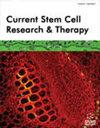A Novel Multi-compartment Rotating Bioreactor for Improving ADSC--Spheroid Formation and its Application in Neurogenic Erectile Dysfunction
IF 2.1
4区 医学
Q4 CELL & TISSUE ENGINEERING
引用次数: 0
Abstract
Objective: The aim of this study was to construct a multicompartment synchronous rotating bioreactor (MCSRB) for batch-production of homogenized adipose-derived stem cell (ADSC) microspheres and treat neurogenic erectile dysfunction (ED). background: Erectile dysfunction due to cavernous nerve injury is commonly associated with pelvic site surgery1, particularly radical prostatectomy, which is one of the most common first-line treatments for men with limited and locally progressive prostate cancer, with a probability of 14-82% of causing erectile dysfunction after surgery, severely affecting patients' quality of life. For this neurogenic erectile dysfunction, the traditional first-line treatment with phosphodiesterase type 5 (PDE5) inhibitors is ineffective and has side effects such as headache, dizziness, and indigestion; thus, there is an urgent need to find a new alternative therapy. In recent years, with the rise of stem cell therapy, the application of stem cells to the treatment of erectile dysfunction has attracted extra attention. Zhang et al. showed that a cytokine secreted by adipose tissue-derived stem cells has a neurotrophic effect on cavernous nerve regeneration. It has also been shown that intravenous infusion of bone marrow-derived mesenchymal stem cells (MSCs) attenuates erectile dysfunction after cavernous nerve injury in rats. However, because of the loose pore-like structure of the penile corpus cavernosum, stem cells injected via the corpus cavernosum carry the risk of cell escape, leading to pulmonary embolism; thus, this issue of safety and limited treatment due to cell escape warrants intensive study. It has been shown that culturing MSCs into 3D stem cell microspheres can significantly activate their paracrine function, which is important for improving the therapeutic potential of MSCs, while Xu's study showed that stem cell microspheres can increase cell retention in the cavernous body and reduce the risk of pulmonary embolism. Previous studies have found that stem cell microspheres can enhance paracrine, anti-inflammatory, and anti-apoptotic functions. Currently, there are many methods for 3D sphere formation of stem cells, such as the suspension droplet method, micropatterning method and microfluidic method, but all of these methods have deficiencies, such as low yield, low recovery of culture medium and the need for special equipment. The multicompartment synchronized rotating bioreactor is a device designed and developed by our team to culture MSC microspheres in 3D. During our experiments, we found that the dynamic culture of 3D stem microspheres using the MCSRB is very simple and convenient, and the design of multiple compartments scales well, which can greatly improve the efficiency and reduce the time of determining the optimal conditions during culture, and significantly improves MSC paracrine function. Therefore, in this study, we investigated whether the dynamic culture of dry 3D microspheres in this bioreactor could effectively restore erectile function and pathological changes in rats with cavernous nerve injury. Methods: Firstly, an MCSRB was constructed using a centrifugal device and hinged trays. Secondly, influence factors (density, rotational speed) on the formation of ADSC-spheroids were explored. Finally, a neurogenic ED model was established to verify the effectiveness and safety of ADSC-spheroids for ED treatment. objective: To investigate the therapeutic effects of dynamically cultured rat adipose stem cell (ADSC) microspheres in a multicompartment synchronous rotating bioreactor (MCSRB) in rats with bilateral cavernous nerve injury-induced erectile dysfunction. Results: An MCSRB promoted ADSCs to gather microspheres, most of which were 90-130 μm in diameter. Supernatant from three-dimensional culture led to a significant increase in cytokine expression in ADSCs and migration rate in human umbilical vein endothelial cells (HUVECs) compared to control groups. The erectile function and pathological changes of the penis were improved in the ADSC-spheroids treatment group compared to the traditional ADSCs treatment group (p < 0.01). Conclusion: Efficient, batch, controlled and homogenized production of ADSC stem cell microspheres, and effective improvement of erectile dysfunction in neurogenic rats can be achieved using the MCSRB device. conclusion: Treatment with 3D ADSC microspheres dynamically cultured in MCSRBs significantly improved erectile dysfunction in neurogenic rats with erectile dysfunction and contributed to the recovery of tissue damage, demonstrating the value of scaled-up culture and the potential clinical application of stem cell microspheres.改善 ADSC 球形形成的新型多室旋转生物反应器及其在神经源性勃起功能障碍中的应用
研究目的本研究旨在构建多室同步旋转生物反应器(MCSRB),用于批量生产均质化脂肪来源干细胞(ADSC)微球,治疗神经源性勃起功能障碍(ED):海绵体神经损伤导致的勃起功能障碍常见于盆腔部位手术1,尤其是根治性前列腺切除术,这是男性局限性和局部进展性前列腺癌最常见的一线治疗方法之一,术后引起勃起功能障碍的概率为14%-82%,严重影响患者的生活质量'。对于这种神经源性勃起功能障碍,传统的5型磷酸二酯酶(PDE5)抑制剂一线治疗效果不佳,且有头痛、头晕、消化不良等副作用,因此迫切需要寻找一种新的替代疗法。近年来,随着干细胞疗法的兴起,干细胞在勃起功能障碍治疗中的应用引起了人们的格外关注。Zhang等人的研究表明,脂肪组织来源的干细胞分泌的一种细胞因子对海绵体神经再生具有神经营养作用。也有研究表明,静脉注射骨髓间充质干细胞(MSCs)可减轻大鼠海绵体神经损伤后的勃起功能障碍。然而,由于阴茎海绵体具有疏松的孔状结构,经海绵体注入的干细胞存在细胞逃逸的风险,可能导致肺栓塞;因此,因细胞逃逸而导致的安全性和治疗受限问题值得深入研究。有研究表明,将间叶干细胞培养成三维干细胞微球能显著激活其旁分泌功能,这对提高间叶干细胞的治疗潜力非常重要,而Xu'的研究表明,干细胞微球能增加细胞在海绵体内的存留,降低肺栓塞的风险。以往的研究发现,干细胞微球可增强旁分泌、抗炎和抗凋亡功能。目前,干细胞三维成球的方法很多,如悬浮液滴法、微图案法和微流体法等,但这些方法都存在产量低、培养液回收率低、需要特殊设备等不足。多室同步旋转生物反应器是我们团队设计开发的一种三维培养间充质干细胞微球的装置。在实验过程中,我们发现利用多室同步旋转生物反应器进行三维干细胞微球的动态培养非常简单方便,多室的设计扩展性好,可以大大提高培养效率,减少培养过程中确定最佳条件的时间,显著提高间充质干细胞的旁分泌功能。因此,本研究探讨了在该生物反应器中动态培养干性三维微球能否有效恢复海绵体神经损伤大鼠的勃起功能及病理变化。研究方法首先,利用离心装置和铰链托盘构建了一个 MCSRB。其次,探讨了影响 ADSC-球体形成的因素(密度、转速)。最后,建立了神经源性 ED 模型,以验证 ADSC-spheroids 治疗 ED 的有效性和安全性:研究在多室同步旋转生物反应器(MCSRB)中动态培养的大鼠脂肪干细胞(ADSC)微球对双侧海绵体神经损伤诱发的勃起功能障碍大鼠的治疗效果。结果多室同步旋转生物反应器促进 ADSCs 形成微球,大多数微球直径为 90-130 μm。与对照组相比,三维培养的上清液使 ADSCs 的细胞因子表达和人脐静脉内皮细胞(HUVECs)的迁移率显著增加。与传统 ADSCs 治疗组相比,ADSC-spheroids 治疗组的阴茎勃起功能和病理变化均有所改善(p < 0.01)。结论使用MCSRB装置可高效、批量、可控、均质化生产ADSC干细胞微球,并有效改善神经源性大鼠的勃起功能障碍:用MCSRB动态培养的三维ADSC微球治疗神经源性大鼠勃起功能障碍,能显著改善勃起功能障碍,并促进组织损伤的恢复,证明了干细胞微球的规模化培养价值和潜在的临床应用前景。
本文章由计算机程序翻译,如有差异,请以英文原文为准。
求助全文
约1分钟内获得全文
求助全文
来源期刊

Current stem cell research & therapy
CELL & TISSUE ENGINEERING-CELL BIOLOGY
CiteScore
4.20
自引率
3.70%
发文量
197
审稿时长
>12 weeks
期刊介绍:
Current Stem Cell Research & Therapy publishes high quality frontier reviews, drug clinical trial studies and guest edited issues on all aspects of basic research on stem cells and their uses in clinical therapy. The journal is essential reading for all researchers and clinicians involved in stem cells research.
 求助内容:
求助内容: 应助结果提醒方式:
应助结果提醒方式:


